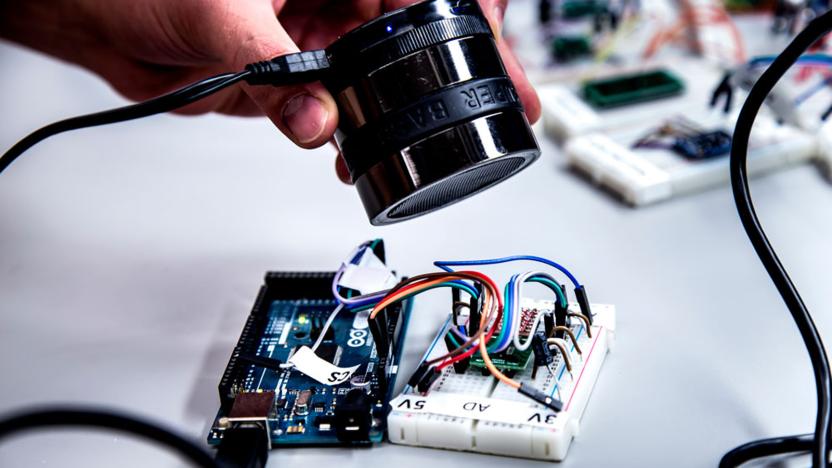ResonantFrequency
Latest

Sound waves can be used to fool your phone's motion sensors
It's tempting to assume that the sensors on your mobile devices are trustworthy. Surely something that relies on real-world activity can't lie, right? Unfortunately, that's no longer the case. Scientists have discovered that you can fool mobile devices' motion sensors into registering non-existent data by playing the right sounds. The technique involves playing a tone at the resonant frequency for the spring structures inside accelerometer chips, much in the same way as you might shatter a wine glass. It's not strictly hacking (not in the conventional sense, anyway), but it could lead to an outsider taking control of motion-related features in the right circumstances.

Scientists put color on your bling with micro carvings, gangsters pacified
Remember that time when you sipped some herbal tea and thought, "I really want a pink gold ring?" Yeah, that was some good tea alright, but the brainiacs at the University of Southampton have actually found a way to achieve this potential fashion trendsetter. The idea is simple: rather than coating metals -- especially naturally colored ones like gold and copper -- with paint, these folks alter their color by using an ion beam to carve fine patterns that are smaller than visible light's wavelength. The resultant metamaterial dramatically boosts the metals' light absorption efficiency, thus reflecting a different color depending on the pattern's radius and etch depth. So for instance, gold can reflect colors ranging from orange to red to green to brown with its ring pattern etch depth ranging from 85nm to 205nm, respectively. See? We told you it's simple, but there's also some visual aid after the break to wrap up this science lesson.

